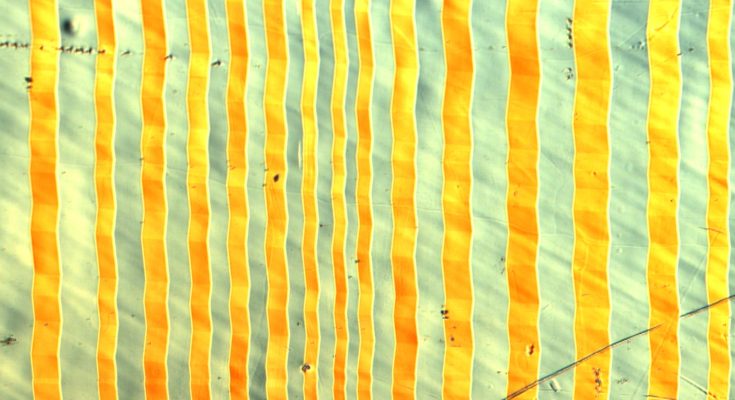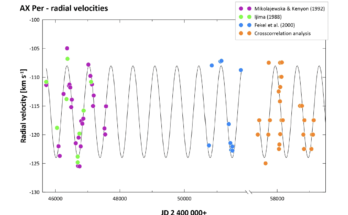Continue to article page to display article full-text.
Explanation for the general audience
This work focuses on the pseudoplastic deformation of Ni50Mn28Ga22 magnetic shape memory alloy. This phenomenon occurs due to the crystal reorientation, which can be induced mechanically or by magnetic field. This so-called giant pseudoplastic deformation that reaches 12 % can be observed even at the room temperature. In combination with martensitic transformation near room temperature, this phenomenon enables so-called magnetic shape memory effect. The recent research proposed utilisation of this alloy in solutions for aerospace engineering, electronic engineering and medical industry that have, however, not yet been widely implemented. It is, therefore, an effort of the current research to further explain the magneto-mechanical properties and to adapt the alloy parameters for a given application. In the first part of the study, the surface structures of samples were investigated using optical and atomic force microscopy. The measurements of mechanical deformation were conducted parallel to the optical measurements to study the effect of stress on the surface structures. Foremost, this work presented measurements and comparison of the energy needed for the elongation of the monocrystalline samples of the alloy in a magnetic field and under mechanical stress. To obtain relevant statistics, four different monocrystals were used and the measurement was repeated many times. In agreement with previous studies, the difference in the two modes of loading was observed in terms of energy. Additionally, the field needed to initiate the process of the elongation of samples was measured. Neither these results nor the consideration of the demagnetization field explained the observed discrepancies between the existing phenomenological model and the conducted measurements.

Šimon SUKUP
Šimon is primarily interested in applied physics and electronic engineering. He placed second in the Physics branch in the national round of Students’ Professional Activities (SPA) in the Czech Republic, with his thesis on Ni-Mn-Ga shape memory alloy and a construction of a micropump. Šimon is a former student of the Archbishop´s Gymnasium in Kroměříž and was also rewarded for his thesis by an award by the Learned Society of the Czech Republic in 2020. During his studies he took part in several summer schools and internships in the field of microelectronics and photonics. He is currently studying Electrical Engineering Bachelor at the Eindhoven University of Technology in Netherlands with the generous support from the Kellner Family Foundation and Bakala Foundation. This paper is an extract from his SPA 2020 thesis on research conducted at the Institute of Physics of the Czech Academy of Sciences.




